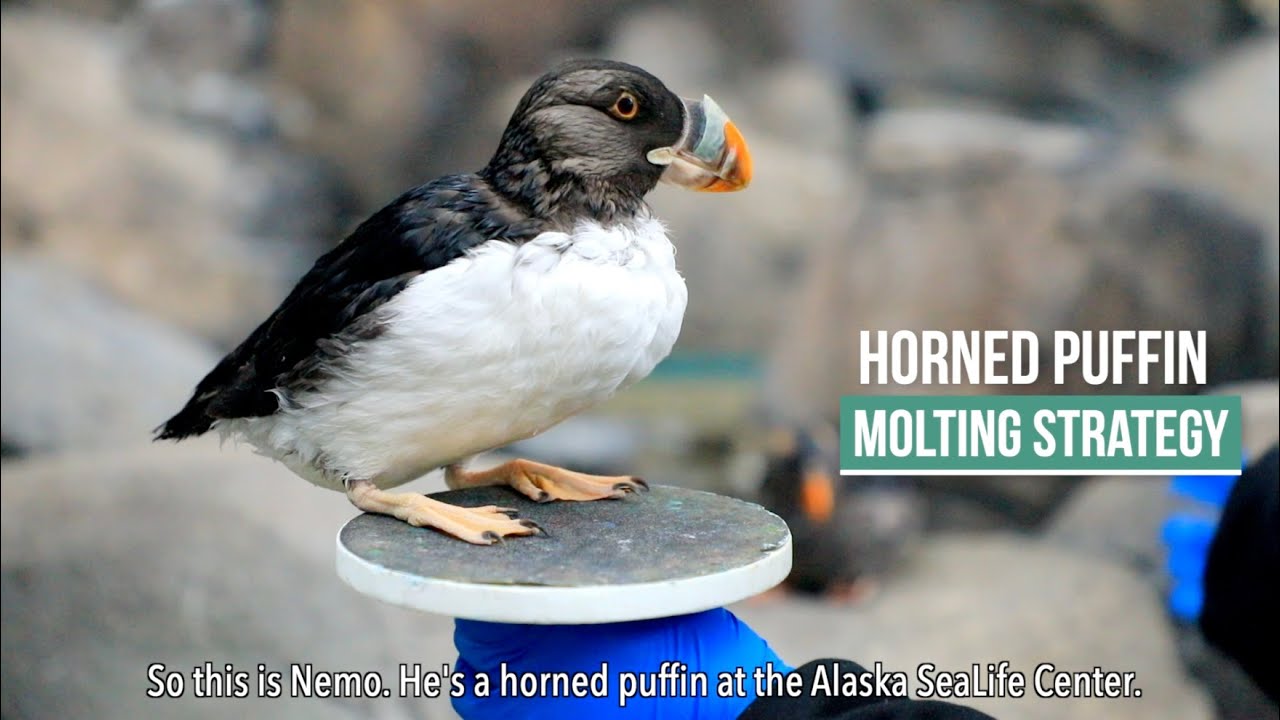*****
Summary of Transcript:
The video shows Nemo, a horned Puffin at the Alaska Sea Life Center who is currently undergoing molting, shedding his old feathers to grow new ones for the breeding season. During this time, puffins are flightless for about a month or so, although they can still dive underwater to hunt for fish. Nemo has lost his body feathers but not his flight feathers yet, making his wings short and stubby. It will take about a month and a half for his flight feathers to grow back, allowing him to fly again.
*****
Summary of Description:
The article discusses a virtual visit featuring Nemo, a horned puffin, at the Alaska SeaLife Center. The visit was made possible by the support of Royal Caribbean Group. Nemo showcased his molting strategy during the visit.
*****
Meet Nemo the Horned Puffin!
The Horned Puffin is a type of seabird that can be found in the North Pacific Ocean. These birds are easily identifiable due to the horn-like projections on top of their eyes. They are also known for their characteristic bright orange beak, which is used to catch fish in the water.
During today’s Virtual Visit to the Alaska SeaLife Center, we are introduced to Nemo the Horned Puffin. Nemo is currently molting, which means he is shedding his old feathers and growing new ones.
Molting Strategy
Molting is an essential process for birds. It helps them to maintain healthy feathers, which are crucial for their survival. Birds use their feathers for a variety of things, including flying, regulating body temperature, and protecting themselves from the elements.
Horned Puffins molt twice a year, once in the winter and once in the summer. During these periods, they shed all of their old feathers and grow new ones. Molting can take up to three weeks to complete, during which time the birds look different and may behave differently.
Nemo’s Molting Process
Nemo the Horned Puffin is currently in the midst of his summer molt. He is shedding his old feathers and growing new, healthy ones. During this time, Nemo may look a little different than he usually does. He may have some bald patches, and his beak and eyes may appear duller than usual.
Although molting can be a challenging process for birds, Nemo seems to be taking it all in stride. He is still very active and social, and he continues to interact with his caretakers and other birds in the exhibit.
How to Help Birds During Molting
If you live in an area where birds are common, you can help them during their molting process by providing them with plenty of water and food. Birds need to drink plenty of water, especially during hot weather when they may lose more water than usual. You can also provide them with a bird feeder filled with seeds or suet, which will give them the energy they need to go through the molting process.
Conclusion
Molting may be a challenging process for birds, but it is essential for their survival. By shedding their old feathers and growing new ones, birds can stay healthy and active. If you ever come across a bird that is molting, remember to give it plenty of water and food to help it through the process. And if you’re lucky enough to meet a bird like Nemo the Horned Puffin, take a moment to appreciate the beauty and resilience of these amazing animals.
*****
See Original Source
Source Description
Meet Nemo the horned puffin!
Nemo is showing us the horned puffin molting strategy during today’s Virtual Visit to the Alaska SeaLife Center.
This “Virtual Visit” episode is made possible by the generous support of our sponsors. Thank you Royal Caribbean Group for making this free program possible!


